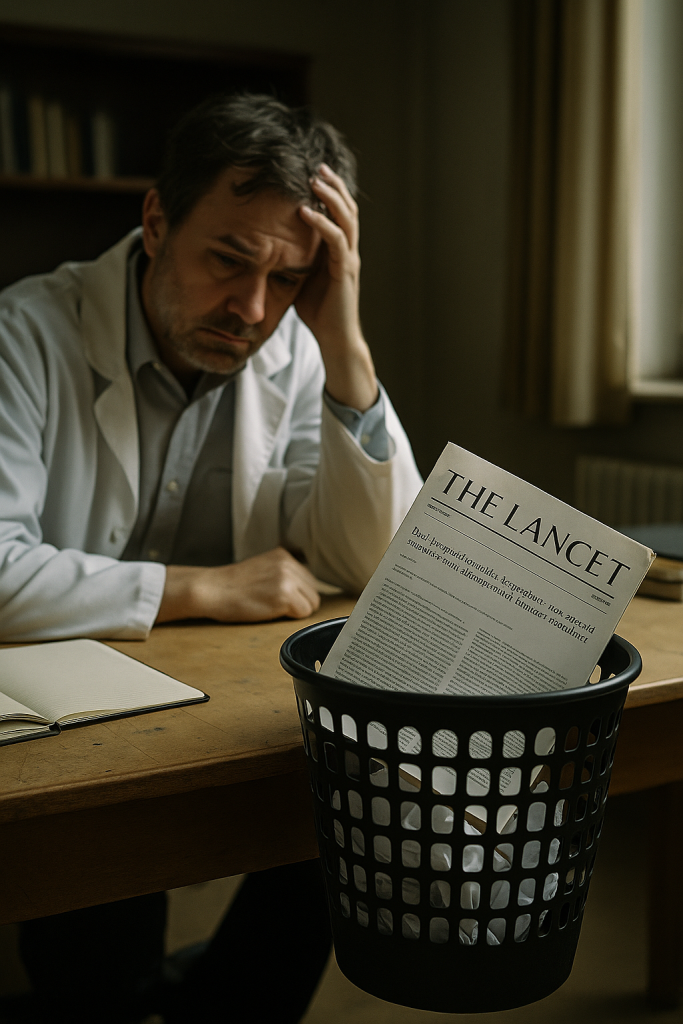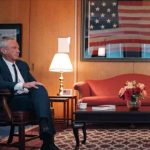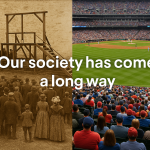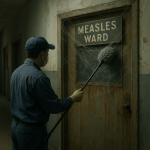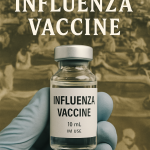In the late 1990s, a single scientific paper set off a panic that would ripple through the world for decades. It sparked headlines, fueled conspiracy theories, derailed public trust in medicine, and led to real harm—outbreaks of preventable diseases, frightened parents, and lost lives.
The claim? That the MMR vaccine—given to protect children from measles, mumps, and rubella—was linked to autism.
The truth? It was a fraudulent claim driven by one man: Andrew Wakefield, the lead author of a study that would become one of the most damaging pieces of medical misinformation in modern history.
📜 The Paper That Started It All
In February 1998, The Lancet, one of the most respected medical journals in the world, published a paper by Wakefield and 12 coauthors. The study examined 12 children, eight of whom reportedly showed symptoms of autism shortly after receiving the MMR vaccine.
Though the paper was cautious in its wording, Wakefield wasn’t. At a press conference following publication, he publicly urged parents and doctors to avoid the combined MMR vaccine in favor of separating the three components—despite offering no reliable evidence that doing so would help.
The media seized on the story. Headlines blared warnings, talk shows lit up with concerned parents, and Wakefield quickly became a hero to vaccine skeptics. Vaccination rates began to fall.
But scientists and clinicians were alarmed. The paper was a case series—an observational report without a control group—not a study designed to test causation. Its sample size was tiny, its methods questionable, and its conclusions speculative.
Even more troubling: it would later be revealed that some of its data had been falsified.
💰 A Web of Conflicts—and Cash
It took years, and the dogged investigative work of journalist Brian Deer, to uncover the full truth.
Wakefield had personally received over £435,000 (plus expenses) from lawyers seeking evidence to support a lawsuit against vaccine manufacturers. This massive financial conflict of interest was never disclosed.
(Source: BMJ, 2011)
He had also filed a patent for a single measles vaccine—a product that stood to benefit if the combined MMR vaccine were discredited.
Several of the children in the study were recruited through anti-vaccine groups. Some underwent invasive procedures like colonoscopies and lumbar punctures without appropriate medical justification or ethical approval. And Wakefield altered medical records, claiming that symptoms of autism appeared shortly after vaccination when, in many cases, they had begun before the MMR shot.
This wasn’t a mistake. It was a deliberate, multifaceted fraud.
📉 Retractions, Revocations, and Repercussions
In 2004, The Lancet issued a partial retraction, and 10 of the 12 coauthors formally withdrew their support for the paper. That same year, Brian Deer’s reporting was brought to the attention of the UK’s General Medical Council, which launched a lengthy investigation.
In 2010, the Council found Wakefield guilty of serious professional misconduct, stating that he had acted “dishonestly and irresponsibly.” He was struck off the UK medical register—effectively banned from practicing medicine.
The Lancet issued a full retraction of the paper that same year, declaring that its findings were “utterly false.”
But the damage was already done.
🌍 The Global Fallout
Despite the retraction, despite the investigations, and despite the flood of evidence disproving his claims, Wakefield’s myth refused to die.
In the mid-2000s, TV personality Jenny McCarthy became one of the most vocal proponents of the vaccine/autism theory after her son’s diagnosis. Her appearances on Oprah and Larry King Live gave the movement visibility and emotional resonance.
But she wasn’t alone. Figures like Robert F. Kennedy Jr., the rise of social media echo chambers, and widespread distrust in medical institutions all contributed to keeping the myth alive.
The consequences were real—and tragic:
- In 2019, the United States experienced 1,282 measles cases, the highest number in 25 years, according to the CDC.
- In Europe, over 80 measles-related deaths were recorded between 2016 and 2019, many among unvaccinated children.
(Source: WHO) - The UK saw MMR vaccination rates plummet in the early 2000s, leading to outbreaks that set back measles elimination efforts.
- In 2019, the World Health Organization declared vaccine hesitancy one of the top 10 threats to global health.
All of this traces, in part, to a single fraudulent paper and the misinformation it spawned.
🧬 What the Science Actually Says
Since 1998, researchers around the world have rigorously examined any possible link between vaccines and autism. The verdict is unanimous: there is none.
A 2002 Danish study of over 537,000 children found no connection between the MMR vaccine and autism.
(Madsen et al., NEJM)
A 2019 follow-up study analyzing 657,461 children confirmed those findings.
(Hviid et al., Annals of Internal Medicine)
Other studies have investigated thimerosal (a mercury-based preservative once used in vaccines), vaccine schedules, and other factors. None have found a causal link.
Importantly, thimerosal was removed from most U.S. childhood vaccines by 2001. Autism rates have continued to rise, further disproving any connection.
Autism is a complex condition with both genetic and environmental influences. Vaccines are not among them. While research continues into other potential contributors—such as prenatal exposures—one thing is clear: vaccination does not cause autism.
And let’s say this plainly: autism is not something to be feared. It is a natural variation in how human brains develop and function—not a tragedy or a failure.
👶 Why It Still Matters Today
If the science is so clear and the fraud so well-documented, why does this myth persist?
Because misinformation spreads faster than truth, especially when fear is involved. Social media, celebrity platforms, and sensational headlines all give the myth more reach than even the most careful scientific studies.
Many parents who hesitate to vaccinate aren’t anti-science—they’re simply trying to do what’s best for their kids. But fear, when based on falsehoods, can be dangerous.
Every child who goes unvaccinated not only faces personal risk but also threatens herd immunity, putting immunocompromised people and infants at risk.
The myth also didn’t end with MMR. The same distrust and disinformation fueled vaccine hesitancy during the COVID-19 pandemic, undermining uptake of life-saving vaccines across the globe.
🔍 The Takeaway: One Man, a Fabricated Claim, and Real Harm
The vaccine/autism myth didn’t begin with uncertainty. It began with a fabricated claim, motivated by ego, ambition, and money.
Andrew Wakefield’s actions undermined public trust, endangered lives, and seeded a movement that continues to disrupt public health efforts today.
He didn’t act alone—but he lit the match. And too many are still living in the smoke.
If we want to rebuild trust in science, protect our communities, and fight back against misinformation, we have to start with the truth.
And we have to keep repeating it—louder than the lie.
🔍 For Further Reading
- World Health Organization – “Ten threats to global health in 2019”
Vaccine hesitancy officially named one of the top global health threats.
https://www.who.int/news-room/spotlight/ten-threats-to-global-health-in-2019 - CDC – “Vaccines Do Not Cause Autism”
A clear summary of the scientific evidence from the U.S. Centers for Disease Control and Prevention.
https://www.cdc.gov/vaccine-safety/about/autism.html - The BMJ – “How the case against the MMR vaccine was fixed” (Brian Deer)
A deep dive into Wakefield’s misconduct by the journalist who exposed it.
https://www.bmj.com/content/342/bmj.c5347 - National Academy of Medicine – “Vaccines and Autism: A Comprehensive Review”
From the Institute of Medicine (now NAM): a landmark report reviewing the full body of evidence.
https://www.ncbi.nlm.nih.gov/books/NBK25344/ - WHO – “Measles cases spike worldwide due to gaps in vaccination coverage”
A reminder of the consequences of vaccine hesitancy driven by misinformation.
https://www.who.int/news/item/29-11-2018-measles-cases-spike-globally-due-to-gaps-in-vaccination-coverage - Autism Science Foundation – “Vaccines and Autism: What You Need to Know”
Written for a general audience by scientists and advocates in the autism community.
https://autismsciencefoundation.org/what-is-autism/autism-and-vaccines/
Last Updated on June 30, 2025

